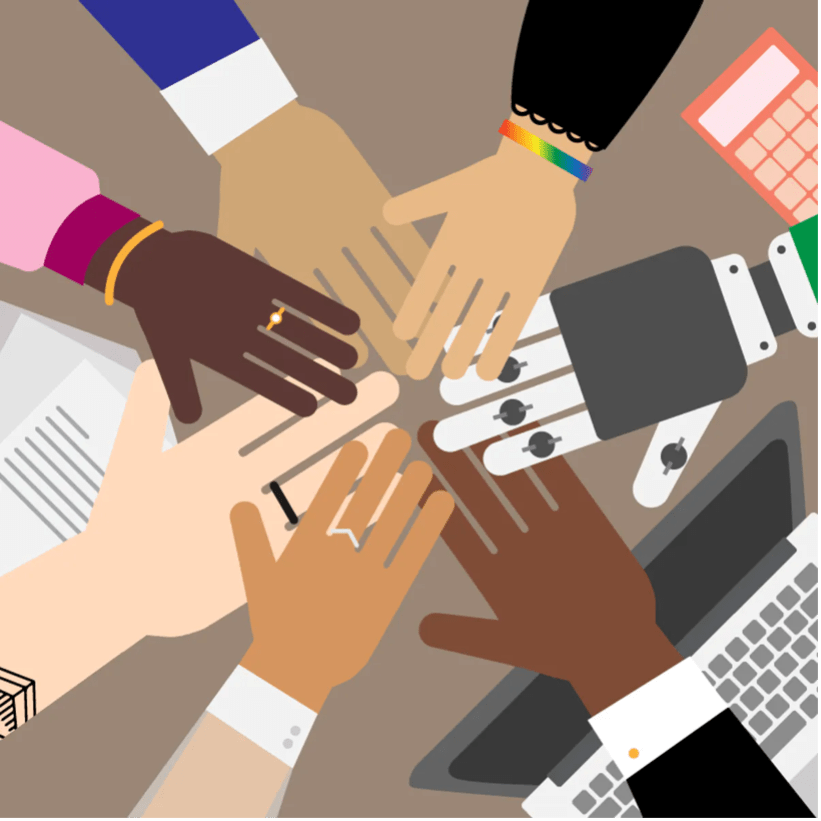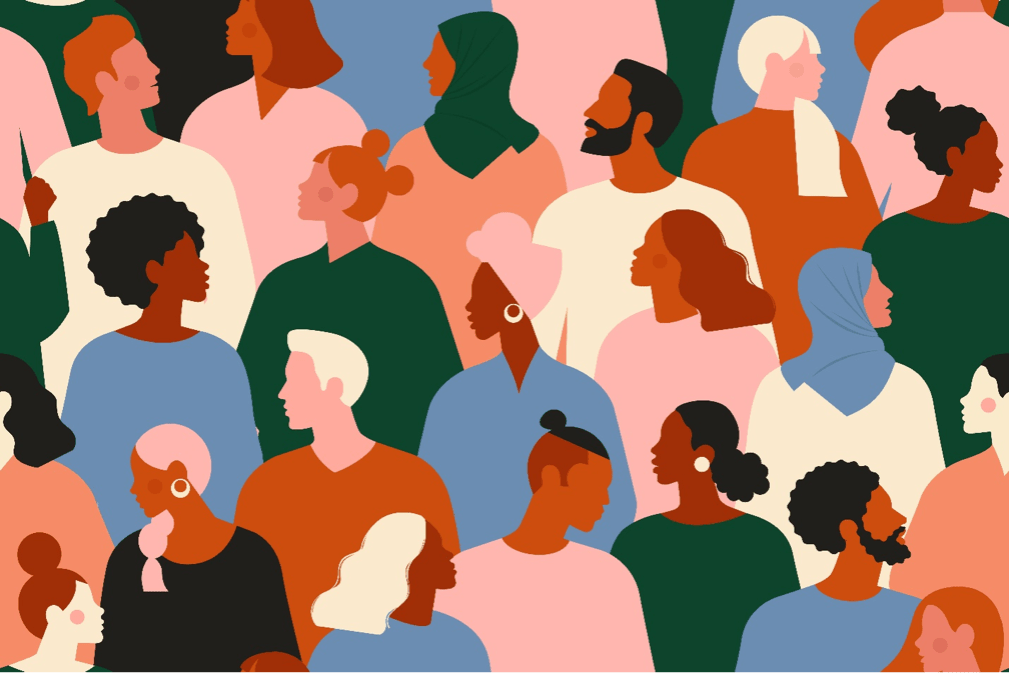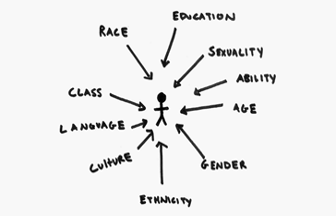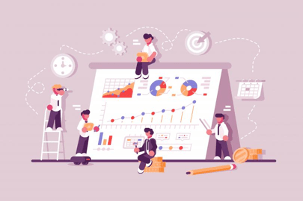In recent years, the ‘Diversity and Inclusion’ (D&I) discussion has been gaining traction in the workplace. In Australia, 76% of organisations reporting to the Workplace Gender Equality Agency (WGEA, 2020) now have a gender equality strategy or policy in place. However, progress is often slow and stilted. Many organisations are unsure about how best to translate their D&I goals into actionable steps.
This insight intends to help organisations close that gap by examining gender diversity data and highlighting successful steps to take that promote diverse and inclusive workplaces. We explore the importance of leadership, how to manage unconscious biases, what is meant by intersectionality and key metrics that can be used to measure progress.
How much gender diversity does an organisation need to experience its positive impact?
Research consistently shows a strong statistical relationship between gender diversity and business performance. In a recent study, companies that were in the top quartile for gender diversity on their executive teams were 25% more likely to outperform their industry peers. Furthermore, the greater the representation, the higher the likelihood of outperformance. According to the 30% Club, the required critical mass for minority groups (including women) to impact boardroom dynamics is 30%. Within the same study, it was found that this meant a 48% difference in likelihood to outperform the least gender-diverse companies. Years of work, across multiple disciplines, have gone into supporting this idea. An experiment run at the University of Pennsylvania found that “newcomers were effective in changing minds only if they made up at least 25 percent of the total population.” This number grew to 30% when simulating real world dynamics like structurally disadvantaged minorities or strong political beliefs.
Gender diverse teams are also linked to increased innovation, better attraction and retention of talent, enhanced brand reputation and positive workplace culture. Importantly, as will be discussed later, other types of diversity like ethnic and cultural diversity deliver similar benefits.
How to promote an inclusive work environment?
Inclusivity requires more than just pursuing balance in diversity. In the Gender Equality Strategy Guide, the WGEA defines equality as “the ability for all employees to access the same rewards, resources and opportunities”. There are formal and informal ways to do this. First, companies can offer fair policies for promotions, parental leave and financial benefits. These formal mechanisms are usually the first to be put in place. Equally as important, companies need to actively promote a dynamic environment where every individual feels included and comfortable being themselves.
In order for this dynamic to take place, employees must feel confident sharing their personalities and perspectives. This does not mean oversharing, but the ability to participate in discussions without feeling pressured to cover up differences in gender, sexuality and background. Professor Kenji Yoshino, director of the Centre for Diversity, Inclusion, and Belonging at NYU School of Law, describes this as covering – “downplaying a known stigmatised identity to blend into the mainstream”. Covering does not always negatively impact workplaces and it is sometimes used in a good way. For example, one may choose not to express their political or religious beliefs at work. Of course, problems related to covering can arise when there is a conflict between the values that a company aims to promote with their diversity policies and employee behaviour. For example, a company promotes inclusion but an employee still downplays their childcare responsibilities or does not feel comfortable bringing their same-sex partner to the end of year party.
Culture Amp’s Diversity, Inclusion and Intersectionality Report 2018 surveyed more than a hundred companies across North America, Asia and Europe. The report found that the feeling of belonging is the measure most highly correlated with employee engagement. Employees who feel like they belong are likely to be more proactive at work and feel better about their performance. When someone joins a new company, it takes time to get to this point. For minority groups, this uncertainty is more likely to occur and last longer. This can negatively impact performance and wellbeing.
If a company really wants to benefit from the opportunities that a diverse group’s collaboration brings, it should take deliberated steps to ensure that different individuals feel included and comfortable being themselves.
Making an Impact
For organisations that want to promote the feeling of belonging among their employees, and improve their D&I, there are many ways to go about it. In this insight, four key areas to focus on are discussed.


1. Leadership Accountability
When it comes to promoting D&I, leadership teams that are reluctant to lead by example often create a disconnect between their company’s walk’ and ‘talk’. That is, what a company says it does, what it actually does and how its employees feel is misaligned. This behaviour can erode credibility and can drive a massive difference (up to 70 percentage points) in the proportion of employees who feel included to those who don’t.
Solving these challenges should start at the top and cascade down. In a previous Visagio Insight, “Why are Women Increasingly Stronger in Leadership Positions”, our Partners recommend five steps for successfully developing gender equality within a company. The first step highlights the importance of leadership promoting and guiding gender equality practices. When leaders prioritise D&I in a company culture and processes, it demonstrates commitment, courage and accountability to employees.
To find out how inclusive leaders were acting differently than others, Pinterest conducted an internal investigation using employee engagement surveys and interviews with managers. The results showed that the most inclusive leaders were the ones creating an empowering culture in their team, dedicating time to give support and connect and that were open and transparent about their fragilities.


2. Engage allies in the company (and be one!)
Leaders should not be the only agents of change. It is crucial that companies enable and empower their employees to be active agents of change, so all employees feel they belong to the workplace. Employees should feel they can participate via daily actions that promote an inclusive environment. The simple act of sharing how you feel, or mentioning that you also pick your kids up after school, might help others avoid covering what they really think or do. Creating an inclusive environment is an ongoing exercise of respecting and being open to differences, and at the same time trying to find common ground between yourself and others. An example of how a company can enable the development of bonds between employees is by offering tools for them to connect. Airbnb developed an intranet page where each employee has a profile, is notified about birthdays and can create an internal network.
Moreover, most people have unconscious biases that cause them to naturally gravitate towards people who are like themselves. Biases affect perceptions of others and can also influence hiring, promotions, and other workplace decisions. They can create barriers that prevent people from working together effectively and developing relationships. To overcome unconscious biases is to actively move beyond factors that are used to classify people, such as gender and race. Learning to question your first impressions, making the first move to get to know someone or looking for common interests with others, are just a few ways. Team building activities can help facilitate this or even schedule a coffee with someone that you don’t know well. Part of being an ally for diversity is being curious, compassionate and open to learning from others.


3. Think and Act Intersectionality
“You don’t feel the pressure of being (a) a woman, (b) a young woman, (c) an Aboriginal Woman?” is an excerpt from Freeman, the documentary that narrates the story of Cathy Freeman. Cathy is a female Indigenous Australian athlete that won the 400-metre run at the 2000 Olympics. The excerpt helps illustrate the concept of intersectionality.
The term ‘intersectionality’ was coined in the late 80’s by Kimberle Crenshaw, a law professor and civil rights activist, when describing the overlapping workplace discrimination experienced by Black women. In her paper for the University of Chicago Legal Forum, Crenshaw writes that “because the intersectional experience is greater than the sum of racism and sexism, any analysis that does not take intersectionality into account cannot sufficiently address the particular manner in which Black women are subordinated”. In 2015, the term was included in the Oxford Dictionary to explain how multiple forms of discrimination (gender, race, class) can overlap and combine. In recent years, the term has become more prevalent, especially with the Black Lives Matter movement.
Intersectionality in the workplace requires recognising that employees are not defined by one identity group. By focusing D&I strategies on one group, such as gender, companies limit their reach and impact on how included employees actually feel. Traditional D&I initiatives tend to focus on specific groups, while an intersectional approach would focus on holistic actions to ensure every single individual feels included.
Abstract, a design collaboration company, takes three main steps to build intersectionality into their hiring strategy and workplace culture. The first is understanding the facts. Abstract looks at demographic data at both a company and team level. They measure gender splits and gender by ethnicity splits. Second, Abstract communicates these facts to the entire company. This includes leaders, hiring managers, team leads and regular employees. This is based on the assumption that their people want to be inclusive, but need to know the facts so that they can focus their energies on making their teams more balanced appropriately. Third, Abstract leads training for hiring managers to help them identify their biases. More than one person is involved in hiring decisions, and there is a background recognition that underrepresentation often occurs because applicants do not fit the traditional mould. Rather than focusing on work experience or demonstrated academic excellence, hiring managers at Abstract ask themselves questions like:
– What transferable skills should we look for?
– How can we identify that an applicant has the desired knowledge and attitudes when they have not followed a traditional education or career path?
These three steps help promote intersectionality at Abstract and build its brand as a great place for people of all backgrounds to work. Crucially, employees are seen and treated as individuals.


4. What cannot be measured cannot be improved
In the era of data, companies are collecting and measuring diversity more and more. In Australia, 46% of organisations reporting to the WGEA now measure their gender gap. This is a significant increase from 24%, in 2013.
One of the first steps companies can take towards collecting D&I data is through surveys. This is a great way to measure the feelings and opinions of employees and if used correctly, they can highlight areas where greater effort is needed and uncover opportunities to empower employees. There are many resources to help determine what questions to ask and where to start, like the Diversity Council Australia or WGEA. Always remember that once the data is collected, the results should be openly shared and acted upon. Without accountability and action, data becomes irrelevant.
Finally, remember that D&I is a journey and the best way to improve is to track progress. Setting goals, tracking the right data and engaging with employees will all help drive progress in the right direction.
At the end of the day, all employees should feel included and comfortable being themselves in the workplace. Unfortunately, some may find this more difficult than others. Companies should strive to remove these difficulties, and by doing so, unlock their employees’ potential. Leadership accountability, engaging allies at all levels of the company, perceiving fellow employees as individuals rather than members of identity categories and measuring progress are some steps that can be taken to promote D&I.
A D&I journey shouldn’t stop until every employee feels comfortable, heard and represented. Engaged and motivated employees create better outcomes and more generally, society as a whole.
About the authors
Luiza Motta is a Visagio Consultant specialising in data analytics and project management. Her background is in Environmental Engineering and Finance. She is also passionate about diversity and inclusion in the workplace and is keen to keep learning more about it.
Emily Low is a Visagio consultant specialising in statistics and analytics projects. She is passionate about encouraging more women and girls to consider pathways in STEM. Emily’s joint Honours degree in Mathematics & Statistics and Philosophy and experience as a junior researcher at the University of Western Australia allow her to solve problems logically and with communication of the final solution in mind.
Sara Peshnak is a Visagio Consultant with experience in project management, data analytics and process improvement. Her background is in Supply Chain and Finance. She has a strong passion for making a positive social impact, including enabling a diverse & inclusive place to work, and is keen to keep learning more.


